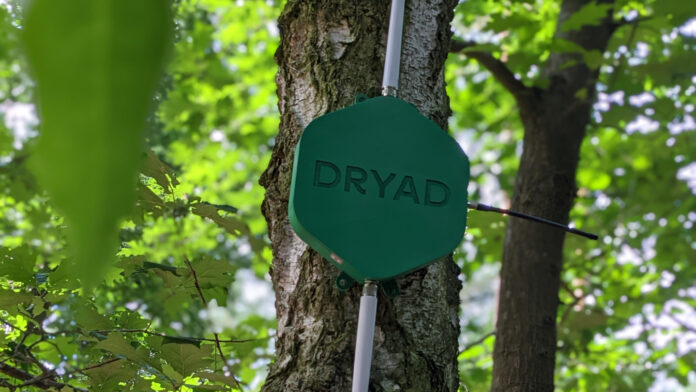Germany-based IoT company Dryad Networks, offering solar-powered AI-assisted LoRaWAN gas sensors for wildfire detection, has signed with France-based satellite IoT startup Kinéis, also using the LoRaWAN standard, to integrate direct-to-satellite connectivity into its Silvanet-branded wildfire sensors. It said the addition of satellite coverage, ready in its new “next-gen”” Silvanet sensors, opens up “groundbreaking new deployment possibilities”.
The Silvanet mesh system detects early signs of wildfires by analysing air quality and gas patterns indicative of fires. Satellite connectivity offers a chance of early wildfire detection even in remote areas without terrestrial network coverage. Kinéis will have a constellation of 25 nanosatellites in low-Earth orbit (LEO), it reckons, launching in five batches of five, over eight months through early 2025. The first five launched on June 18, on a SpaceX shuttle.
Three further launches are scheduled for before the end of 2024; a final launch will take place in the first quarter of 2025. Each LEO satellite weighs 30 kilograms, and is set to operate at an altitude of 650 kilometres. Preliminary tests will be carried out through the end of 2024; Kinéis wants a commercial service in 2025, it said. It has approval from the Federal Communications Commission (FCC) to operate in the US market.
Dryad Networks explained the value of satellite coverage for its system: “Power line and rail companies… [have] linear assets spanning vast, remote areas. Deploying comprehensive sensor coverage in these scenarios could be challenging due to limitations in terrestrial network coverage. [This] addresses this challenge, enabling a simplified and cost-efficient direct sensor-to-satellite communication for wildfire detection and prevention along critical corridors.
“In particular, installations for linear infrastructure such as powerlines or railways, or in difficult terrain such as mountainous regions will benefit from direct-to-satellite connectivity. With a significantly simplified installation, Silvanet wildfire sensors will become even more cost-effective. Direct-to-satellite connectivity ensures continuous, reliable detection in remote areas, crucial for wildfire mitigation efforts.”
The addition of satellite-based network access also offers Dryad Networks new redundancy capabilities, as well – to “guarantee uninterrupted service even if terrestrial connectivity is disrupted or sensors are placed out of range”. The first satellite/terrestrial LoRaWAN mesh gateways from Dryad Networks will be available by the end of 2024. The duo said they aim to deploy “hundreds of thousands of these IoT terminals worldwide over the next three years”.
Carsten Brinkschulte, chief executive at Dryad Networks said: ‘‘We are excited to collaborate with Kinéis, as this partnership not only broadens our technological capabilities but also aligns with our mission to provide comprehensive wildfire protection. Integrating Kinéis’s satellite technology with our Silvanet sensors adds a vital layer to our detection ecosystem, especially for linear infrastructure, while reinforcing our commitment to the LoRaWAN mesh networks.’’
Alexandre Tisserant, chief executive at Kinéis, said: “Dryad Networks is at the forefront of ultra-early fire detection, making them the ideal partner for this expansion. By combining our satellite capabilities with Dryad’s innovative sensors, we are creating a truly global, adaptable solution to fight the growing threat of wildfires all over the world.”
Dryad Networks continues to pick up contracts with government agencies, municipal authorities, forestry trusts, and private landowners variously in Australia, North America, and parts of Europe. At the end of last year, the firm announced it is also working with the National Trust in the UK to install 50 wildfire detection sensors on Marsden Moor in West Yorkshire.

